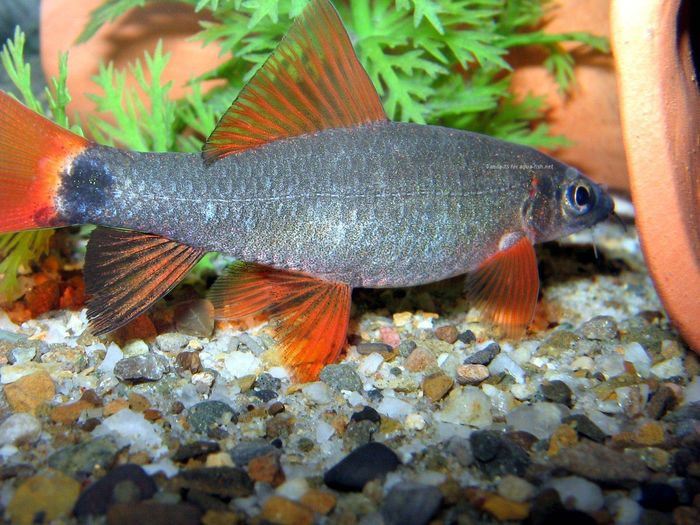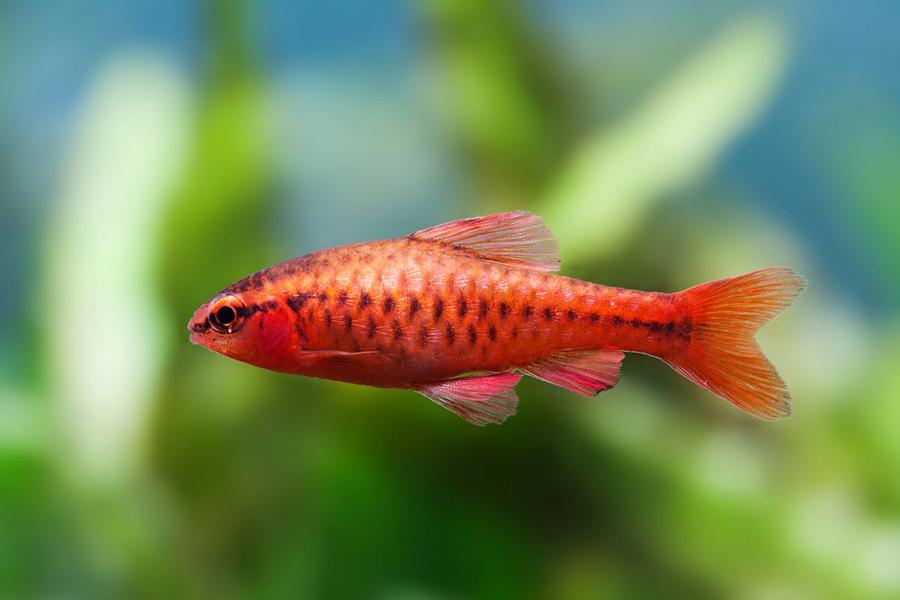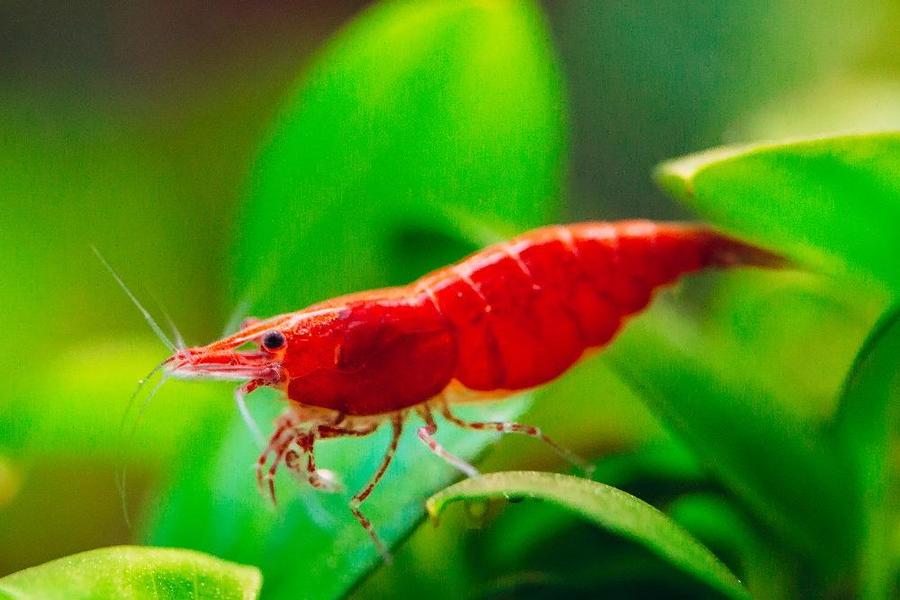Lambchop Rasbora Fish is a small fish that perfectly keep a flock are very popular with aquarists. They can live in small volumes and have extremely interesting behavior. One of these babies is the espei rasbor, which will be discussed in our material.
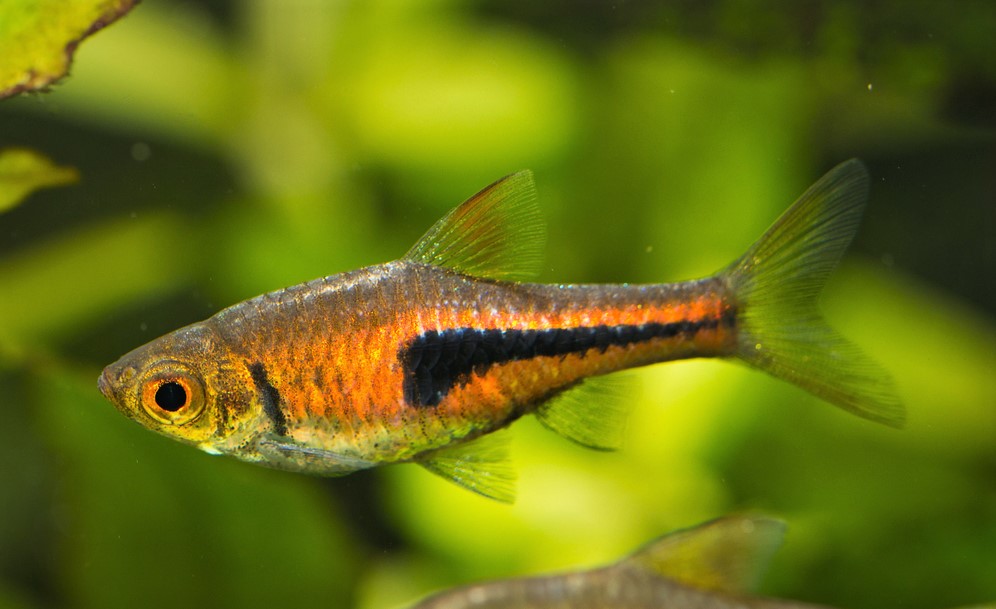
General Information About Lambchop Rasbora
Rasbora espey, or espei (Latin Trigonostigma espei, English Lambchop Rasbora) is a representative of the carp family native to the reservoirs of southwestern Thailand, Cambodia.
In nature, the fish inhabit various biotopes, including forest streams and tributaries with dense thickets of aquatic and submerged plants. Due to the high content of tannins, the water in such places is brown, and the bottom is strewn with fallen leaves and branches.
In the south of Thailand, these fish can live even in karst lakes with a lot of limestones and alkaline water, which is very clean and from afar seems bright blue or turquoise from the sky reflected in it.
This fish reaches a relatively small size – 2.5-3 cm and prefers to huddle in large schools. It has a laterally flattened body, the background color is brownish-olive. On the sides of the rasbora, it has a shiny bronze plating, and from the middle of the body to the very tail, there is a black strip, shaped like the end of a hockey stick. Large eyes are located on the head, allowing the fish to easily navigate in space.
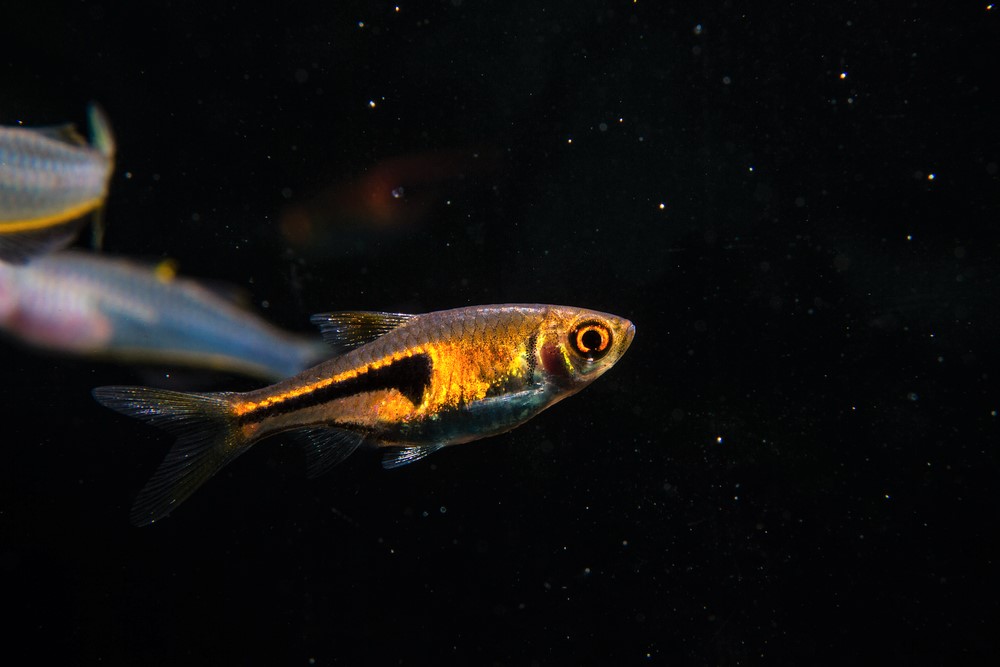
Habitat
From English, the name of the fish can be translated as “lamb chop”. This name is probably derived from a specific spot that resembles a meat product.
Fishes from different localities have different colors in intensity. Thus, fish from the reservoirs of the Krabi province, located in southern Thailand. They have more red in their plumage compared to their counterparts from the eastern province of Chanthaburi.
In the aquarium, the fish swim gracefully, huddling in a large school – this is how they explore the free spaces of the container. They keep mainly in the water column.
In-store aquariums, stress is often not properly stained due to stress and therefore is often underestimated by potential owners.
Conditions For Living
In terms of care, these fish are quite simple and can be recommended for novice aquarists. In order for the animals to color beautifully, it is better to create conditions for them that are most similar to natural ones, and this is not at all difficult:
- These fish can be settled in very small aquariums. For a flock of 10 tails, a container of 25-30 liters is quite suitable. But if you plan to plant neighbors, then the size of the vessel should be larger.
- Rasbora is unassuming to decor but looks best in containers with natural decorations – driftwood, leaves, plants, and brown water.
- You can also put any substrate, but it is better to opt for a dark one. Because it is on it that the fish demonstrate all the brightness of the color.
- In nature, Rasbora lives in the twilight; therefore, too bright lighting can be a source of stress for them. For these fish, it is best to use dim light, and organize a large number of shaded areas in the aquarium itself.
- Fish are also indifferent to plants they do not pluck shoots, do not dig in the roots. But only swim among the labyrinths of thickets. It is better to put floating shade-tolerant plants in the aquarium with rasbora, which will create many shaded areas.
Recommended water parameters:
- Temperature: 23-28 ° C;
- Acidity: 5.5-7.5 pH;
- Hardness: up to 10 ° dH;
- Weekly changes of 25% of the aquarium water.
Feeding Lambchop Rasbora Fish
In nature, these micro predators prey on various aquatic invertebrates. In-home aquariums, are very voracious and gladly eat all types of live, frozen, and dry food.
You can feed your pets with tubifex, small bloodworms, and defrost brine shrimp. You should carefully monitor the fraction of the feed since tiny fish are not always able to cope with too large pieces.
In order for the Lambchop Rasbora Fish to show more red tones in their color, it is recommended to use feeds containing carotenoids.
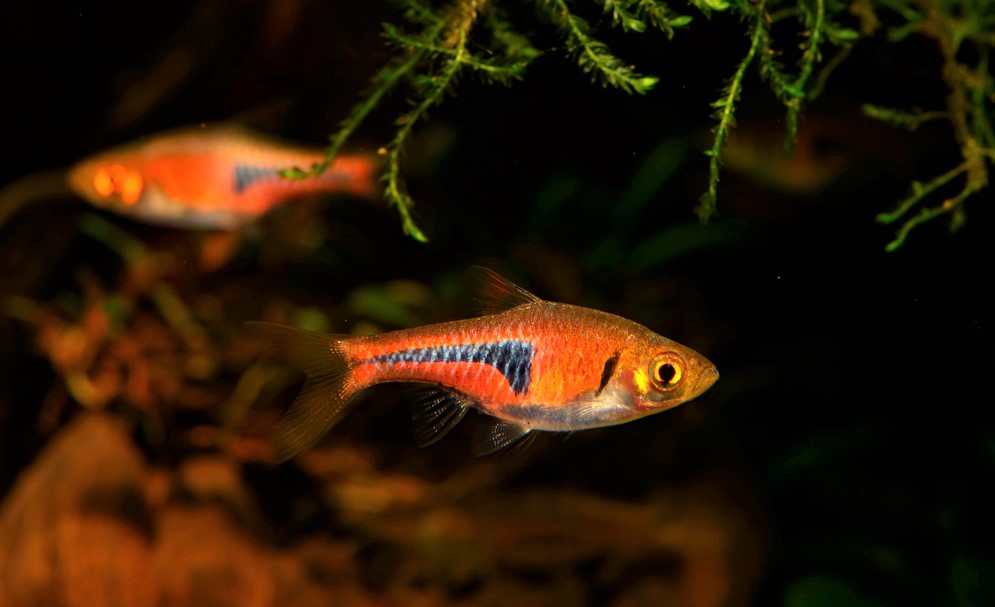
Related : Fantail Goldfish
Breeding
Fish become sexually mature from 5-6 months, but individuals aged from one year and older are best suited for breeding.
There is no clear sexual dimorphism in rasbor, but it is not difficult to determine the sex of the fish. The females are larger, paler, and a rounded abdomen appears closer to their spawning.
If the conditions in the aquarium are good, the fish will be able to spawn on their own, but most of the offspring simply will not survive. If you want to maximize the number of fries obtained, it is best to take control of this process.
Producers should be sexually segregated and fed generously with high-protein foods.
Before spawning, a spawning ground is prepared. Typically, a 20-liter container is used for these purposes, half of the water for which is taken from a common aquarium, and the other half is filled with a standing tap. It is advisable to install a small regular or air-lift filter and aerator in the spawning grounds. Low plants serve as a substrate for spawning. You can also place a separator mesh on them so that parents do not eat their own eggs. In this form, the spawning grounds should stand for about a day.
To stimulate spawning, it is recommended to prepare an oak broth. For him, in a pharmacy you need to buy oak bark and boil a piece in a liter of water for 30 minutes. After that, the broth is passed through a very dense sieve and cooled. It must be added one hour before you put the producers to spawn. It is not worth pouring out the entire broth: as soon as the water acquires a light tea shade, this means that enough has been added.
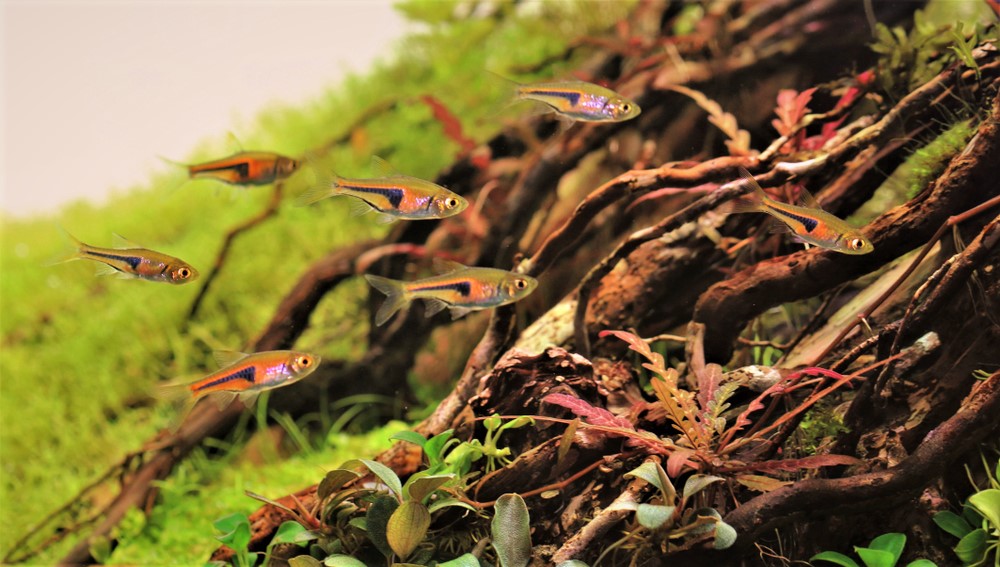
More About Breeding Lambchop Rasbora Fish
The fish are sent to spawn in the evening; a couple of hours after their resettlement, the lights are turned off, and the aquarium itself is shaded in every possible way. In the morning, as soon as the light comes on, the fish begin to spawn.
Spawning lasts about 2.5 hours, after which the fish need to be planted, the water level should be lowered to 10 cm, and the aquarium itself should be covered to prevent light from entering it.
After 32 hours, larvae begin to hatch, and after another 4 days they will swim. At this moment, you can remove the various darkeners and start feeding the fry with “live dust”. As the fry grow, the feed fraction is increased, first giving them grated egg yolk, and then the brine shrimp nauplii.
You need to feed the little rasbor quite often – about 6 times a day. In addition, it is necessary to carry out a daily change of 15-20% of the water in the aquarium.
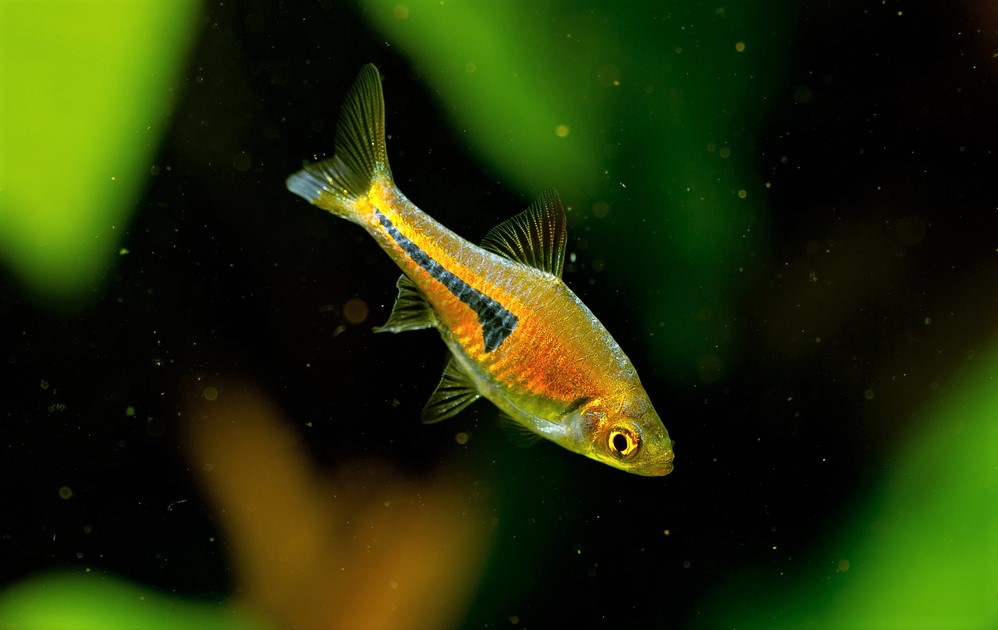
Compatibility
These fish are peaceful and can adapt to different water conditions, which makes them ideal inhabitants in an aquarium that contains inhabitants from different parts of the world.
As neighbors, other commensurate fish with a similar temperament are perfect – tetras, small barbs, other rasbora, pecilia, etc
It is important to remember that it is better to acquire a large group of fish, because in a small team, the rassors begin to stress, hide, and their life expectancy is reduced.


